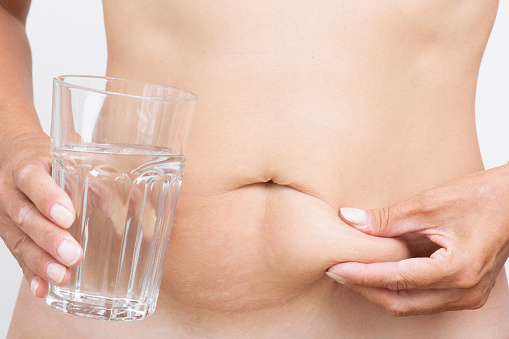lipolysis is the process of breaking down triglycerides, which are stored in fat cells, into glycerol and fatty acids. This breakdown of fat is necessary for the body to use it as a source of energy. Lipolysis can be stimulated by various factors, such as exercise, fasting, and certain hormones like adrenaline and glucagon.

What is the breakdown of fats in metabolism?
The breakdown of fats in metabolism is a process called lipolysis, which occurs primarily in adipose tissue (fat cells). The breakdown of fats is a complex process that involves several steps:
- Activation: In the first step, fatty acids are activated by attaching a molecule of coenzyme A (CoA) to them, forming fatty acyl-CoA.
- Transport: Fatty acyl-CoA is then transported from the cytosol of the cell to the mitochondria, where it will be broken down further.
- Beta-oxidation: In the mitochondria, the fatty acid undergoes a process called beta-oxidation, in which it is broken down into two-carbon units that enter the citric acid cycle (also known as the Krebs cycle) to generate energy.
- Electron transport chain: The electrons generated during beta-oxidation are then used by the electron transport chain to generate ATP, the energy currency of the cell.
Overall, the breakdown of fats in metabolism is an essential process for providing energy to the body during periods of fasting or prolonged exercise when glucose stores are depleted.
Why do I still look fat after lipo?
While liposuction can remove stubborn pockets of fat from certain areas of the body, it is not a weight loss procedure and is not intended to address obesity or overall body weight.
After liposuction, it is common for the body to experience swelling, bruising, and fluid retention, which can obscure the results of the procedure for several weeks or even months. It is also possible that the remaining fat cells in the treated area can enlarge or new fat cells can form if you gain weight after the procedure.

It’s important to note that liposuction is not a substitute for a healthy lifestyle, including regular exercise and a balanced diet. It is also important to have realistic expectations about the results of the procedure, and to discuss these expectations with your doctor before undergoing liposuction.
If you are concerned about your post-liposuction appearance or have questions about your recovery, you should speak with your doctor for guidance and advice.
Does lipo leave saggy skin?
Liposuction removes fat cells from beneath the skin, which can result in a reduction of volume and a change in the contour of the treated area. In some cases, liposuction can also result in sagging skin, especially if a significant amount of fat is removed or if the skin has lost elasticity due to factors such as aging, weight fluctuations, or pregnancy.
If the skin has lost elasticity, it may not be able to contract tightly around the new contours of the body after liposuction, leading to sagging skin. However, many people who undergo liposuction do not experience sagging skin, and the extent of sagging skin can depend on factors such as age, skin quality, and the amount of fat removed.
To minimize the risk of sagging skin after liposuction, your surgeon may recommend a technique known as “tumescent” liposuction, which can help to stimulate collagen production and improve skin elasticity. In some cases, your surgeon may also recommend a skin tightening procedure such as a tummy tuck or arm lift in conjunction with liposuction to address excess skin.
It’s important to have a thorough consultation with a board-certified plastic surgeon to discuss the risks and benefits of liposuction and any potential concerns you may have about sagging skin. They will be able to assess your individual situation and recommend the most appropriate treatment plan for your goals and needs.
What triggers lipolysis?
Lipolysis is the process by which the body breaks down stored fat cells to release fatty acids and glycerol, which can be used for energy. The process is triggered by several factors, including:
- Caloric deficit: When the body is in a state of negative energy balance, such as during fasting or calorie-restricted diets, lipolysis is triggered to release stored fat for energy.
- Exercise: Physical activity, particularly aerobic exercise, can stimulate lipolysis by increasing the demand for energy and promoting the release of hormones such as adrenaline and cortisol.
- Hormones: Hormones such as insulin, glucagon, and growth hormone can also play a role in regulating lipolysis. Insulin suppresses lipolysis, while glucagon and growth hormone promote it.
- Stress: Acute stress can stimulate lipolysis through the release of stress hormones such as cortisol and adrenaline.
- Thermogenesis: Certain compounds, such as caffeine and capsaicin, can stimulate thermogenesis, or the production of heat in the body, which can increase metabolic rate and promote lipolysis.
It’s important to note that lipolysis is a complex process that is regulated by a variety of factors, and there is no one-size-fits-all approach to triggering it. Maintaining a healthy diet and exercise routine, managing stress, and getting enough sleep can all help to support healthy metabolism and promote lipolysis.
